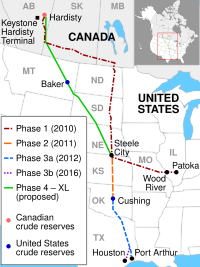
Photo from wikipedia
&NA; The developing Human Connectome Project is set to create and make available to the scientific community a 4‐dimensional map of functional and structural cerebral connectivity from 20 to 44… Click to show full abstract
&NA; The developing Human Connectome Project is set to create and make available to the scientific community a 4‐dimensional map of functional and structural cerebral connectivity from 20 to 44 weeks post‐menstrual age, to allow exploration of the genetic and environmental influences on brain development, and the relation between connectivity and neurocognitive function. A large set of multi‐modal MRI data from fetuses and newborn infants is currently being acquired, along with genetic, clinical and developmental information. In this overview, we describe the neonatal diffusion MRI (dMRI) image processing pipeline and the structural connectivity aspect of the project. Neonatal dMRI data poses specific challenges, and standard analysis techniques used for adult data are not directly applicable. We have developed a processing pipeline that deals directly with neonatal‐specific issues, such as severe motion and motion‐related artefacts, small brain sizes, high brain water content and reduced anisotropy. This pipeline allows automated analysis of in‐vivo dMRI data, probes tissue microstructure, reconstructs a number of major white matter tracts, and includes an automated quality control framework that identifies processing issues or inconsistencies. We here describe the pipeline and present an exemplar analysis of data from 140 infants imaged at 38–44 weeks post‐menstrual age. HighlightsA comprehensive and automated pipeline to consistently analyse neonatal dMRI data.Optimised motion and distortions correction to address newborn specific challenges.The automated QC framework allows to detect issues and to quantify data quality.Automated white matter segmentation allows to extract tract‐specific masks.Preliminary data analysis of 140 infants imaged at 38–44 weeks post‐menstrual age.
Journal Title: Neuroimage
Year Published: 2019
Link to full text (if available)
Share on Social Media: Sign Up to like & get
recommendations!